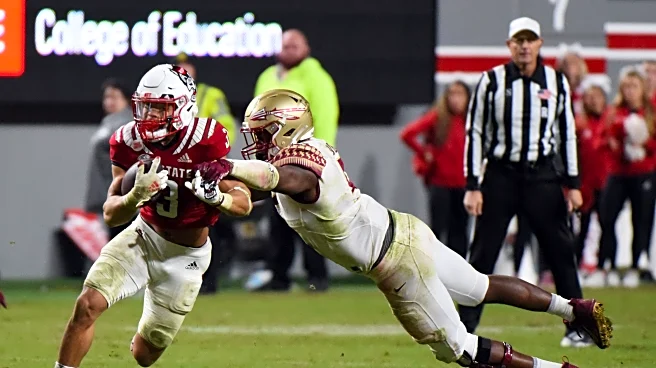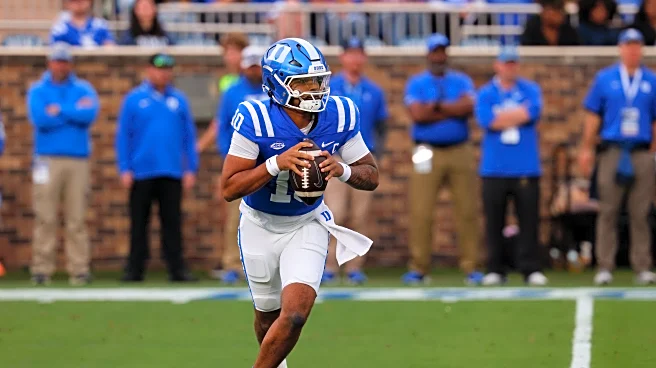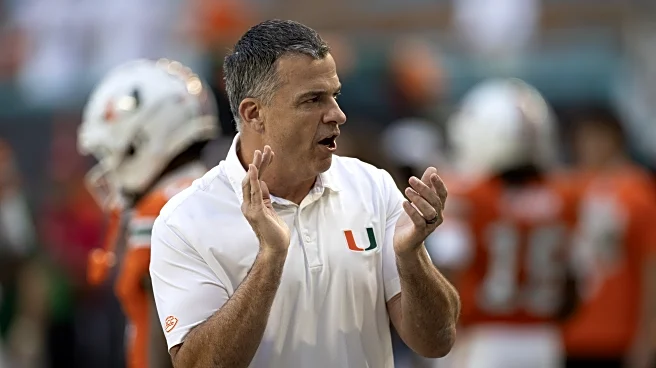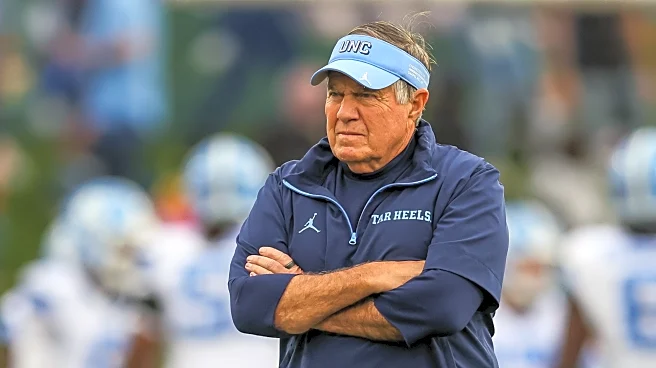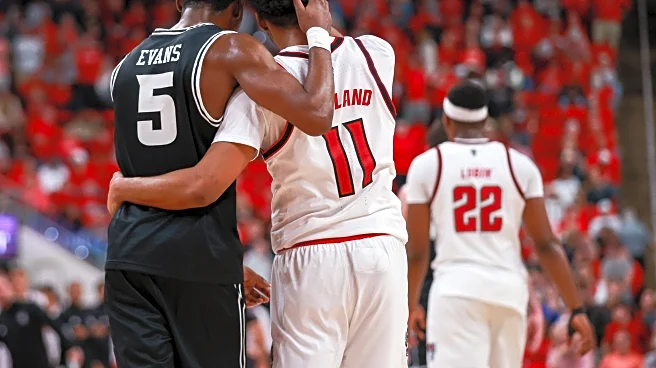On Saturday afternoon in Kenan Memorial Stadium, the Tar Heels and Blue Devils will battle for mediocrity.
Both programs have fallen well short of expectations this season and find themselves fighting for
bowl eligibility and, of course, bragging rights.
Carolina is struggling to score, and Duke has lost three of the last four games, each in a different way.
Here are a few things to keep an eye on when the Blues battle for the Victory Bell.
Duke’s Passing Attack
The Blue Devils have the seventh-best passing offense in the nation. Duke is averaging 302 passing yards per game, and their 25 passing touchdowns rank eighth in the country.
There are two key factors for their success through the air.
Duke is an aggressive, early-down passing team that uses first down to generate explosive plays.
The Blue Devils have 1,237 passing yards on first down, completing 100 of 151 passing attempts. In fact, over 42 percent of Duke’s passing attempts occur on first down.
Over a third of Duke’s passing touchdowns have occurred on first down, and quarterback Darian Mensah has not thrown an interception on first down.

The other key factor is Mensah’s explosive passing plays this season.
Out of Mensah’s 242 total completions this season, 132 have been explosive plays of 15 yards or more. He has the same number of explosive plays on first and second downs, completing 45 of these passes in each situation.
The challenge for Carolina is two-fold. First, the Tar Heels must disrupt the Blue Devils passing game on first down. UNC must force incompletions on first down to get Duke “off schedule.”
Second, Carolina must limit explosive plays. If UNC’s safeties creep up to stop the run or react to play-action on first down, Mensah has proven he can beat teams over the top.
The blueprint for stopping Mensah has emerged over the last month, specifically in Duke’s losses to Virginia and Georgia Tech.
Last Saturday, Virginia held Duke to season lows in total yards (255), passing yards (213), and completions (18).
Virginia loaded the box early and held Duke to just 42 rushing yards on 23 carries, which is just 1.8 yards per carry. By completely erasing the run threat, they forced Duke into obvious passing situations. The pass rush forced Mensah to scramble or throw off his back foot, leading to sacks and inaccurate throws.
Georgia Tech used schematic confusion to hold Duke to just 18 points. The Yellow Jackets would show one coverage before the snap, and then shift to another after the snap. The Blue Devils had nearly 400 yards of offense, but struggled in the red zone.
If Carolina can put pressure on Mensah, specifically forcing him to move laterally where he is less comfortable, and rotate coverages post-snap to create confusion, the Tar Heels may have a shot at limiting the passing attack.
Can the Tar Heels reestablish their run game?
Carolina has gone over 70 minutes of game time since their last touchdown. UNC will have to find some points against a team that averages over 33 points per game.
The obvious area of concern is the running game. After steady improvement during the Cal and Virginia games, culminating with over 200 yards on the ground against Syracuse, UNC ran for 50 yards versus Stanford and 56 against Wake Forest.
While UNC’s ground game has been inconsistent, Duke’s run defense has been in a free fall over the last month.
Duke has allowed an average of 181.5 rushing yards per game in their last four contests, with Virginia tallying 224 yards on the ground.
The Blue Devils have not held a Power 4 opponent to fewer than 100 rushing yards since October 4 against Cal.
The key for Carolina will be winning the battle in the trenches. Head Coach Bill Belichick explicitly cited “too much penetration” in his press conference after the loss to Wake Forest. Wake Forest’s defensive line consistently reset the line of scrimmage into the UNC backfield.
Duke’s defensive front is smaller than Wake Forest’s, and some injuries could hamper their run defense.
If Carolina can get the advantage on the push and have some success early, the run game may have a shot to be reestablished.
Win the Turnover Battle
Against FBS competition, Duke is 4-0 when winning the turnover battle, 0-5 when losing it.
In wins over NC State, Syracuse, Cal, and Clemson, the Blue Devils have committed a total of zero turnovers.
In five losses, Duke has lost eight fumbles and thrown four interceptions.
During those wins, Duke’s defense has forced 12 turnovers. In the games against NC State and Cal, they forced four turnovers each. This creates shorter fields for their offense and keeps the opposing defense playing for much longer.
In five losses, Duke’s defense has forced only three turnovers.
UNC just needs to be clean to keep them in the game. Against Cal, Virginia, and Wake Forest, turnovers had significant impacts on the game.



